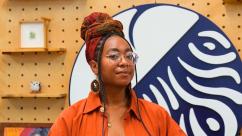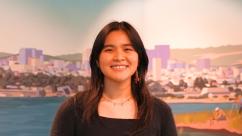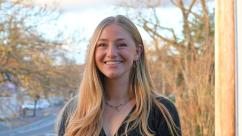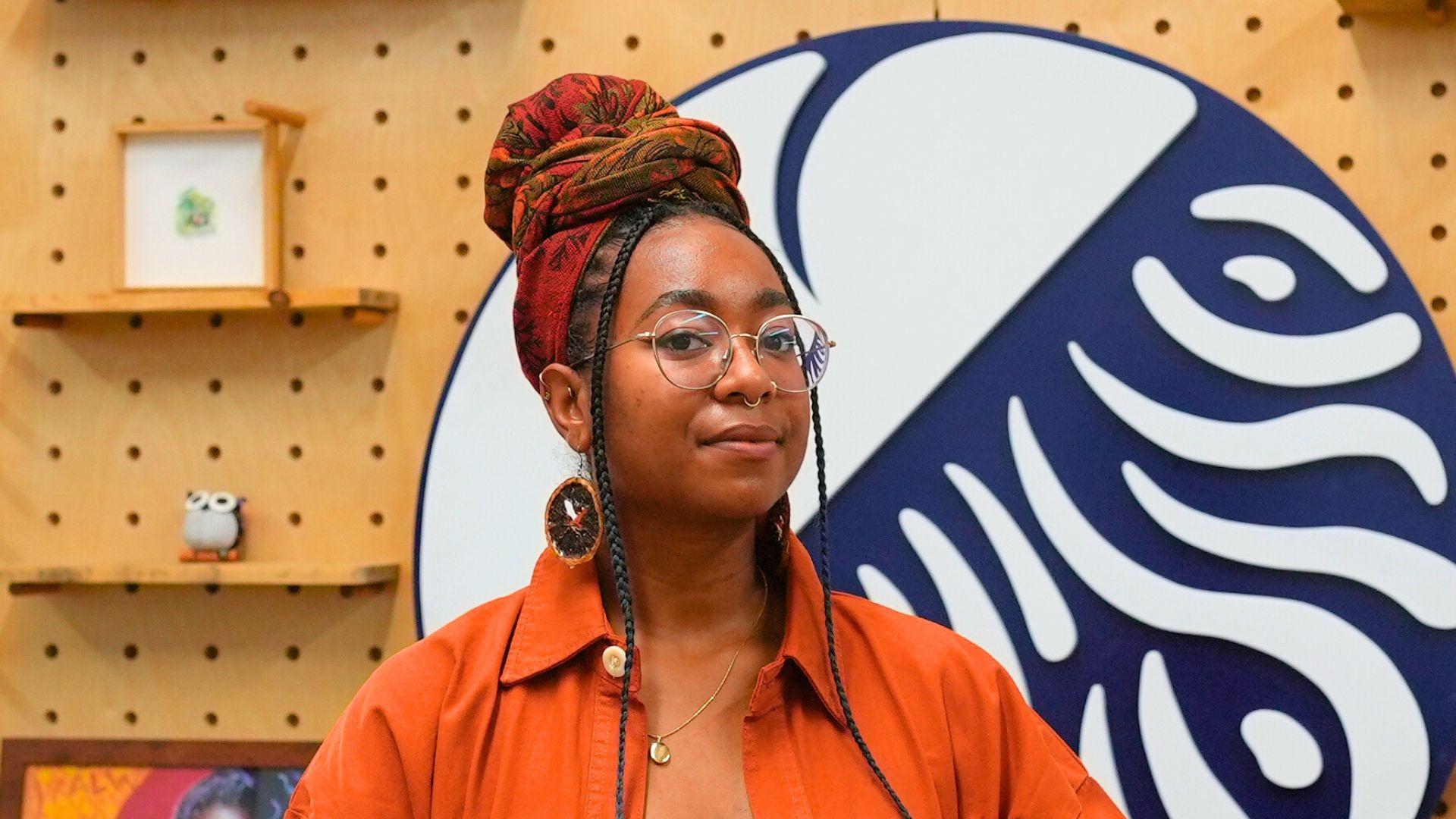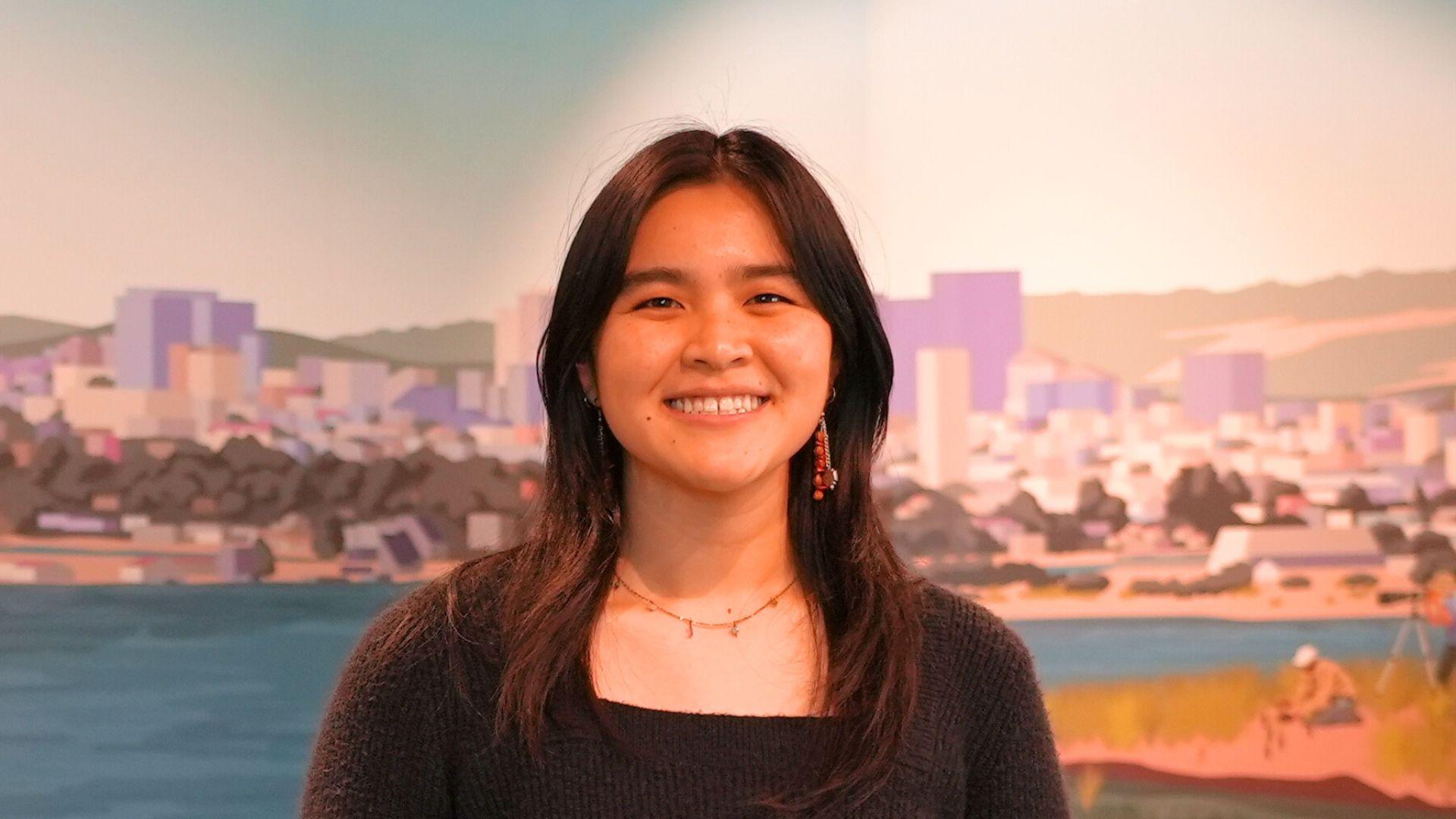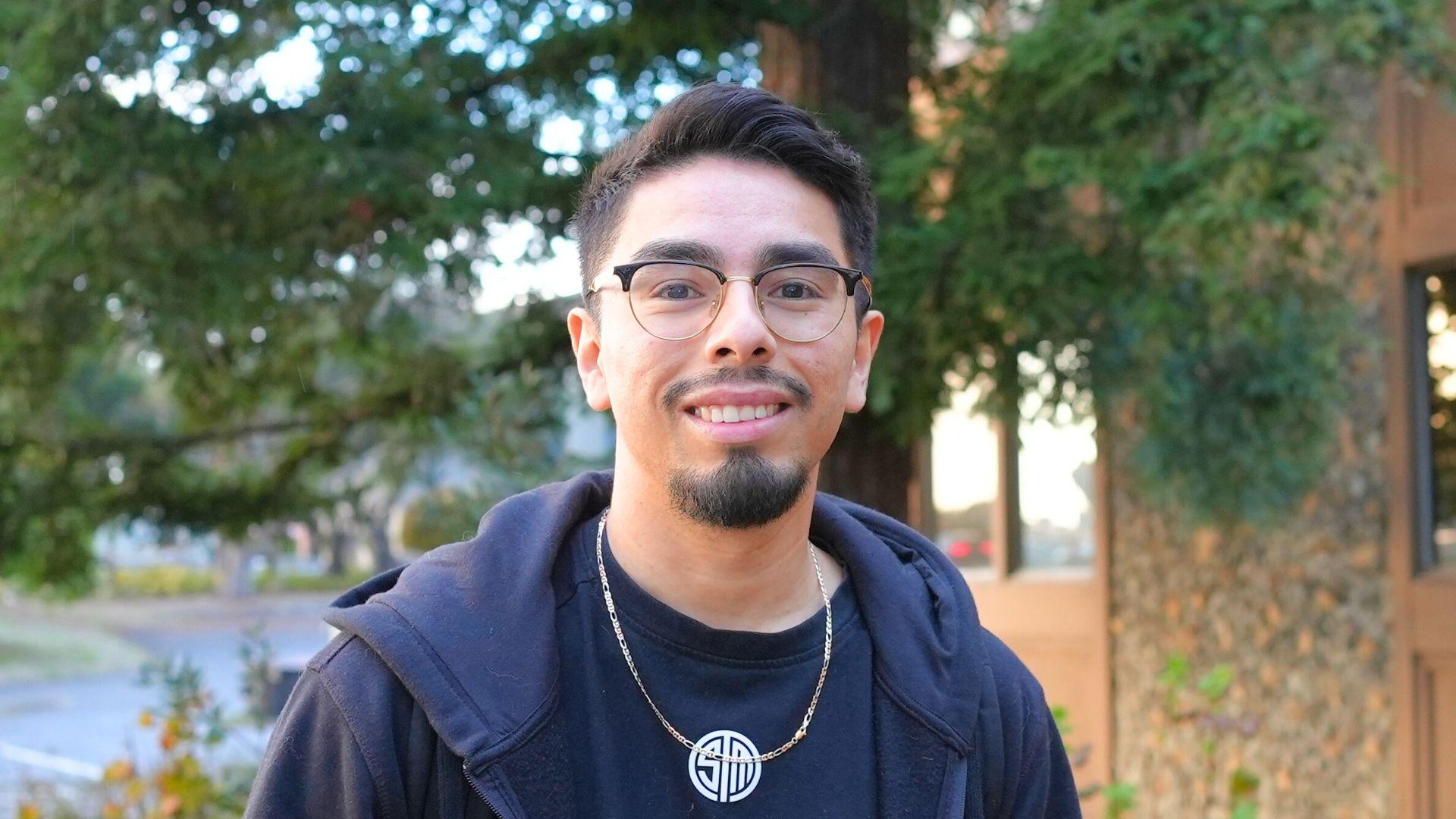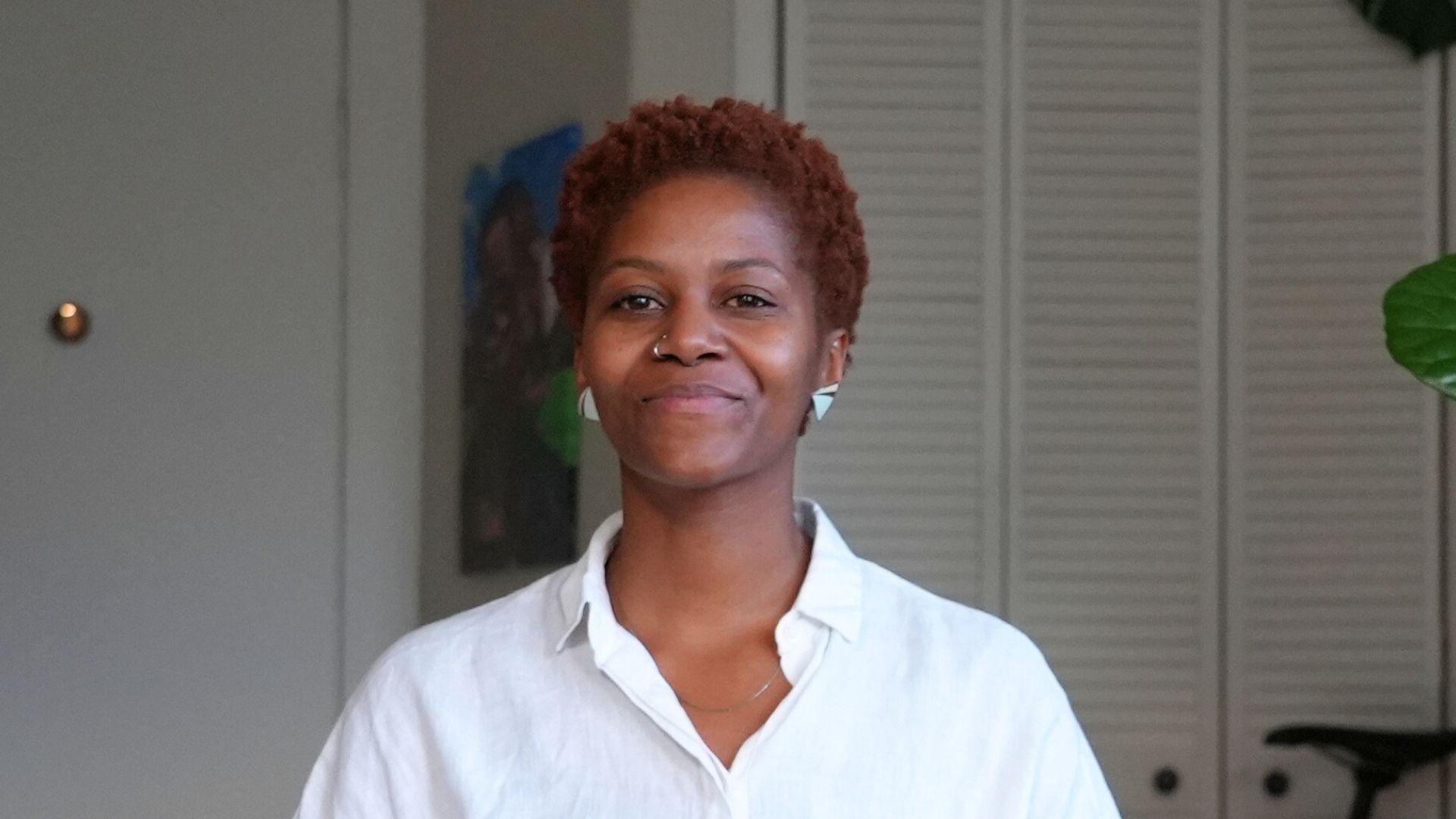Layel Camargo: Bringing Visionaries to Connection to Land
In this Episode
Layel’s Story
Layel Camargo co-founded Shelterwood Collective, a nonprofit, BIPOC-led (Black, Indigenous, People of Color) land collective. Located on the unceded lands of the Kashia and Southern Pomo Territory, currently known as Cazadero, California. Shelterwood is responding to climate change by returning land sovereignty to Black, Indigenous, and Queer people as well as those with disabilities, with a focus on community-driven land stewardship, ecosystem restoration, and community healing. Through the stewardship of a 900-acre forest, Shelterwood land protectors and cultural change-makers lead climate solutions such as forest restoration, food sovereignty, and wildfire risk reduction. Layel is Yaqui and Mayo, Indigenous to Mexico and the Sonoran Desert. As an Indigenous, transgender, and gender non-conforming person, Layel is working to build a future for the next seven generations, where all identities, especially those most marginalized and excluded from mainstream environmentalism, not only exist but thrive. Community members live at the collective to foster enriching bonds with the land and relationships with each other. "In my work as a land steward,” they say “it is about creating a place and safe haven for artists to be able to come, caretake the land, connect to a physical place and be able to say this is my home and I belong and to deepen their commitment to protecting the earth."
Discussion Questions
One of the most important things you can do regarding climate change is talk about it.
- Shelterwood is an example of a local response to climate change, rooted in a physical place and designed and driven by a collective of people from the ground up. Healthy forests and green spaces act as carbon sinks, which absorb harmful greenhouse gas emissions, making Shelterwood's place-based stewardship of land essential for our global response to climate change. However, Layel shares that they use the term “land management” loosely, because Shelterwood is a “...project that was born out of the desire of having rightful relationships between Black and Indigenous people returning to land and doing large scale land management…[but] it really is a birthright to take care of the land, so it feels more spiritual than it is management.” Describe a green space near where you live. Do you feel a sense of connection to this place? Does the land provide benefits to you and your community? Why might stewardship and protection of that land be a climate solution?
- Shelterwood's work relies on Indigenous wisdom of land stewardship, which is personally significant for Layel, who is Yaqui and Mexican. "A big part of who I am is reclaiming my body of Indigeneity and of my grandparent's struggle to have to assimilate and conform to the loss of culture in order to survive," they say. "As Indigenous people, this is something that we were in reverence with every single day. Every decision that we made, how we harvested, where we put crops, where we built our homes, why we chose to leave, it's because we were thinking about the past in preparation for the future." Project Drawdown recognizes Indigenous land tenure as an essential climate solution, since Indigenous peoples have long been the frontline of resistance against deforestation; mineral, oil, and gas extraction; and the expansion of mono-crop plantations. Based on your knowledge of climate solutions, how often have you heard of Indigenous land stewardship as a viable way to preserve our ecosystem and address climate change? Why might some solutions like renewable energy be more invested in, recognized, and normalized as climate solutions compared to solutions like Indigenous land stewardship?
- When thinking about what gives them hope, perseverance, and passion for a better world, Layel shares inspiration from their ancestors and recalls their grandma, who left Mexico and everything she knew for a better life. Sometimes, Layel imagines their grandma standing in power as a medicine woman, or finds inspiration in other ancestors, nomads who navigated and persevered in the harsh desert, determined for something more. "Whenever I feel there is something wrong in the world, I think about them…how much they chose to still have children…I think about my own mother who had to go to school…even though she didn't know the language and assimilate to that living…So for me to have the opportunity to be educated, to be able to sit and ponder in a forest and think about my role in…protecting the planet, protecting this earth, and this land, and whatever ecosystem I am fortunate enough to steward, then I am doing something for the next seven generations." Who are your ancestors, and what do you know about how their actions contributed to your life? Thinking ahead to the next seven generations, what year might that be? What do you imagine the world will be like at that time? How might your actions today help contribute to a better future for your descendants?
- Layel has dedicated the last decade to advancing climate justice through supporting artists and identifies themself as a filmmaker and storyteller. Layel shares that bringing the arts to climate change engagement is a creative way to get people into the climate conversation. “I believe we need to continue to bring visionaries to connection to land. Artists specifically are kind of the beacon of hope in times of peril because they show us what we cannot see for ourselves, and at the same time, they show us what we want to believe can happen.” How might artists who create in various forms, whether music, dance, visual depictions, poetry, or film, tell stories that can help shape how we think about climate change and what is necessary to build a better world?
Learn More
Learn about the solutions in this story.
- Sectors: Food, Agriculture, & Land Use; Land Sinks
- Climate Solutions Cluster: Protect Ecosystems
- For more on all of Project Drawdown’s climate solutions, visit drawdown.org/solutions
- Learn more about Layel’s work at Shelterwood Collective
Explore Climate Solutions 101, the world's first major educational effort focused solely on climate solutions. This video series combines Project Drawdown’s trusted resources with the expertise of inspiring, scientifically knowledgeable voices from around the world: drawdown.org/climate-solutions-101.
Check out the Drawdown Roadmap, a science-based strategy for accelerating climate solutions that ensures efforts to stop climate change by governments, businesses, investors, philanthropists, community organizations, and others are as impactful as possible.
Visit the Yale Program on Climate Change Communication, a resource that shares research, communications strategy, and opinion polling on climate communications.
Take Action
- Subscribe to the Project Drawdown newsletter to receive biweekly insights and inspiration to guide your own climate solutions journey.
- Drawdown Ecochallenge, presented by Ecochallenge.org, is a fun and social way to take measurable action on the top climate solutions. Take the challenge, and see how a few weeks of action add up to a lifetime of change for you and the planet. If you want to take action on climate solutions like Layel, start a challenge today.
- The Drawdown Labs Job Function Action Guides are practical resources that highlight specific, high-impact climate actions employees in common corporate professions can take at work.
- ChangeX connects people with proven ideas for strengthening communities with the resources needed to implement those changes. Explore countless ways to improve your community and help the world reach drawdown.
- Climate Generation's Green Careers for a Changing Climate Instructional Supplement (for Grades 6-8) contains resources to help young people learn about Green STEM Careers—paths that use STEM skills to help reduce the impacts of climate change. Throughout this instructional supplement, students use Project Drawdown resources to make important connections between climate solutions and different careers.
- Solutions Journalism Network highlights the importance of reporting stories of climate solutions in the media to create a more equitable and sustainable world. Visit their Teaching Climate Solutions resource to find curated collections and the latest examples of climate solutions journalism.
- SubjectToClimate (StC) is a nonprofit online connector for K-12 leaders of all subjects to find materials on climate change at no cost. Explore StC’s educator-generated database to connect to Project Drawdown-based climate education resources.
Sign up to receive updates, provide ideas, and tell us how you might share Drawdown’s Neighborhood in your community.


